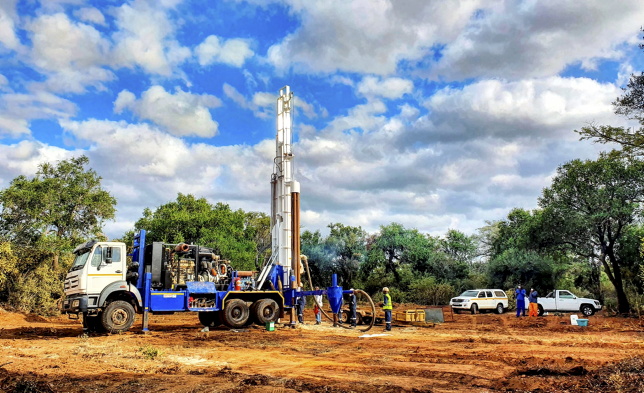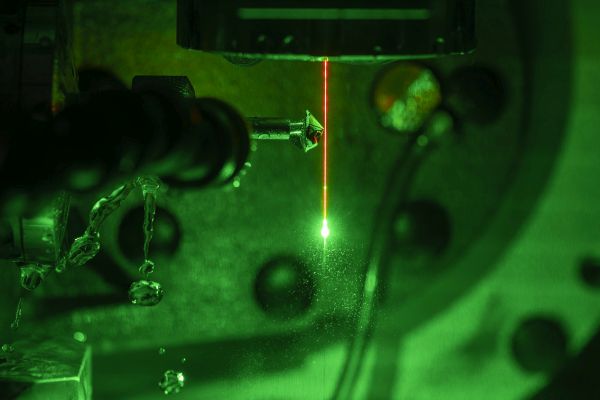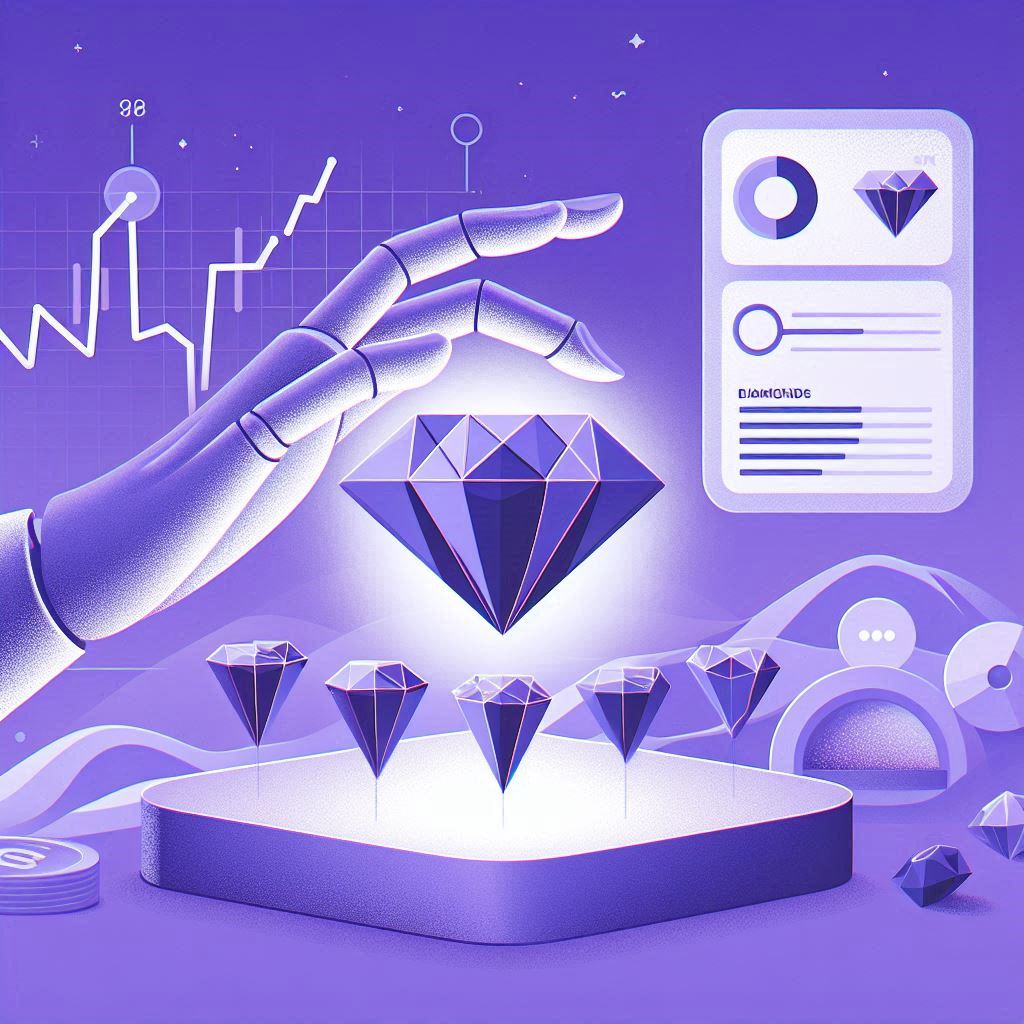Can AI Really Help Improve the Diamond Industry?
In 2022 AI stormed into the business world, and from eCommerce to marketing the benefits were clear.
But when it comes to very physical, high-value products like diamonds, it’s harder to see how AI cuts its way into the picture.
Its ability to quickly digest, compile, analyze, and generate data makes it highly applicable to many areas of the diamond industry—some of which may surprise you.
With roughly ten million people employed in the diamond industry worldwide and a global market size of $96.4 billion in 2022, AI in the industry is still in its infancy, with multiple ways it can increase value and boost productivity across the board.
What Is AI, and How Does it Fit Into The Diamond Industry?
While most easily recognized as generative tools like ChatGPT, Claude, Gemini and many others, AI’s capabilities stretch beyond answering questions.
Standing for Artificial Intelligence, AI isn’t entirely new, with basic forms of AI created as early as 1955. While almost 70 years old, in the last few years AI has become sophisticated enough in multiple areas to be applied across many different businesses and industries.
The most famous form, generative AI refers specifically to AI programs that can generate new content based on input data. This includes anything from making notes on article to creating a new image based on prompts.
Meanwhile, analytical AI - programs capable of compiling and analyzing vast data sets - are the new drivers of growth in the diamond industry. Specifically designed to identify patterns, this form of AI can be applied across the diamond industry pipeline, right from helping to find new diamond deposits to optimizing diamond prices and everything in between.
Taking AI From Up in the Clouds To A Practical On-the-Ground Tool
More than just a marketing tool or advanced version of a Google Search, AI can and is being used on the ground in the diamond industry.
Here’s how.
Finding New Deposits: Harnessing AI Analytics
Before a diamond begins its journey into the world, it must be found and mined.
And AI can help locate it.
Mining companies have long conducted lengthy surveys of potential areas, analyzed drilling samples, assessed airborne geographical data, and completed ground geographical surveys to find new diamond deposits and other minerals.
Over the years, these companies have accumulated hundreds of gigabytes of geographical data. If there’s one thing AI is good at, it’s analyzing data.

This is something that the million-dollar company Botswana Diamonds realized and begun to take advantage of.
Botswana Diamonds intends to use Planetary AI Ltd’s Xplore mineral prospectivity technology to take advantage of its vast amount of geographical data.
By feeding its roughly 380 gigabytes of data into the Xplore, the AI should be able to find new patterns in the data and locate fresh drillable targets for the company to aim for.
“Our mineral database in Botswana is simply vast. Too big for timely analysis by humans. Think of it, over 375,000 kms of geophysical data, and 32,000 drill holes logs”
- chairman of Botswana Diamonds, John Teeling.
While still a new technology, the company is confident this AI bet will pay off, and deliver them a new way of processing their surveying data to yield more minable deposits.
Can AI Help Diamond Grading Evolve Beyond the 4Cs?
Diamond grading is already highly sophisticated.
Almost unanimously graded based on the four Cs - carat weight, cut, color, and clarity, accurately assessing and grading diamonds can take years of training and expertise.
That’s not to mention that some diamonds are more challenging to grade than others.
Most grading reports can take several weeks, and getting a certification from major industry grader GIA (Gemological Institute of America) can take up to 26 weeks.
With over 100 million carats worth of rough diamonds produced each year, alongside tracing diamonds, simply grading them is a significant challenge for the industry.
One way to speed things up without sacrificing accuracy or quality is through AI.
To create their AI-powered Cut Grading System, GIA conducted over 70,000 observations over 15 years to develop the database that powers their system, allowing them to efficiently grade standard round brilliant diamonds in the D-to-Z color range.
These AI-powered grading systems are excellent at processing “mainstream” diamonds, as more data is available to train the AI tools on.
As a relatively new technology, AI grading is not ready for more complex diamond grading.
Similar to its application in many other industries, AI in diamond grading is set to automate basic tasks, allowing the grading of large quantities of “mainstream” stones. Meanwhile, professional diamond graders can focus their time, energy, and expertise on grading more challenging cases.
AI is not here to replace diamond graders. Instead, it’s here to help, grading the basics while they focus their expertise where it is most needed.
Other Ways AI Can Help Forge A New Future for The Diamond Industry
While grading and surveying are two of the major applications of AI within the diamond industry, they are not the only areas already reaping the benefits of this new technology.
Across more niche areas of the diamond industry, AI is revolutionizing the entire chain from diamond cutting and polishing to cybersecurity and diamond pricing.
Making Diamond Cutting and Polishing Easier With AI
Before a diamond (or any other gemstone) can be graded, it needs to be cut and polished - both processes that can massively impact the quality of the final diamond.
While the need for highly-skilled and qualified professionals isn’t going anywhere, advanced AI algorithms have already started revolutionizing this sector.
Much like with grading, AI tools can be trained on vast numbers of cutting case-studies, providing them with the data needed to learn specific types of cuts that can then be automatically applied to matching rough diamonds.
Before the release of ChatGPT that led to public obsession over AI, in 2020 Synova had already launched its DaVinci system.
A leading Swiss company that specialises in providing diamond manufacturing equipment, Synova’s DaVinci system is capable of completing almost the entire rough-to-polished process, creating brilliant cut diamonds with up to 57 facets in a single automated process.

The applications of this AI-powered technology is vast, but not endless. AI-powered machines are still no match for human skill - especially when it comes to larger, more difficult, or more fragile stones. Using sensors on the machine and pre-inputted data, these tools cannot make independent decisions when unexpected events occur.
While humans are more specialised, tools such as the DaVinci Diamond Factory are brilliant for speeding up the rough-to-polished process, producing well-cut, reasonably polished diamonds much faster than a single human ever could.
Much like AI in the grading process, this allows human professionals to better use their skills on more challenging rough diamonds, and use their skills to oversee automated machines for more standard diamond cutting requirements.
Analyzing and Optimizing Diamond Pricing
The value of every single diamond is unique, determined by it’s grading, yet like any physical product, the overall pricing of diamonds across the industry can change.
From varying demand to increasing wholesaler markups, different brand premiums and rising certification costs, knowing how to price your own diamonds can be difficult.
Once again, AI’s ability to analyze vast amounts of data makes it the perfect tool for this challenge.
While other diamond pricing alternatives exist, their determination methods are often unclear and somewhat subjective or effected by other interests. Meanwhile, AI tools help provide more objective, data-driven and predictable pricing.
Companies such as BidGemmer have created advanced AI tools that allow you to enhance and optimize your diamond pricing in real time by providing you with a more precise and current market prices.
This technology can be implemented across the pricing pipeline, helping you optimize diamond auctions and use AI to develop a more accurate and intuitive price-book for your own products.
AI at Its Best: Protecting Against Fraud in the Diamond Industry
Diamonds are one of the world’s most well-known valuable commodities in the world, and those in the diamond industry must be especially vigilant against the threat of fraud.

Luckily, AI solutions are revolutionizing how the diamond industry prevents fraud.
Through analyzing bids AI can detect suspicious patterns, helping professionals avoid bid fraud and flag those who engage in price manipulation. And that’s not all.
AI tools can also help protect against payment scams by flagging the use of stolen credit cards or accounts and cards linked to money laundering.
On top of all of this, AI can help improve existing systems, making due diligence easier with more data-intense background checks and enhancing KYC (Know Your Customer) processes by automatically cross-referencing key identification documents with multiple databases.
All of this helps bolster the diamond industry’s cybersecurity and push back fraud.
BidGemmer’s Role in Bringing AI Advances to the Diamond Industry
AI has been revolutionizing core parts of the industry for several years from behind the scenes, helping locate new diamond deposits, cut and polish rough diamonds, grade them, price them, and keep them safe from fraud.
As AI’s role in the diamond industry has continued to expand, BidGemmer has added more and more AI tools to its available services.
Designed to help diamond sellers manage their auctions via intuitive AI technologies, BidGemmer incorporates different AI tools to help you manage your inventories, prices, and customer relationships all within one platform.
Request a Demo today to see how BidGemmer can help you manage your diamond auctions and inventory.
